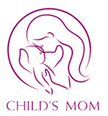Pregnancy is a beautiful and transformative journey, but it also comes with its fair share of challenges and potential complications. One such complication that can arise, especially at 32 weeks of pregnancy, is preeclampsia. Preeclampsia is a condition that can affect both the mother and the baby, and it’s crucial to be aware of its signs and symptoms for a safe and healthy pregnancy. In this article, we will explore the signs of preeclampsia at 32 weeks, what you need to watch out for, and how to manage this condition.
Understanding Preeclampsia
Before diving into the signs of preeclampsia at 32 weeks, let’s briefly understand what preeclampsia is. Preeclampsia is a pregnancy complication characterized by high blood pressure and damage to organs such as the liver and kidneys. It typically occurs after 20 weeks of pregnancy and can affect both first-time mothers and those who have had previous pregnancies without complications.
1. Elevated Blood Pressure
One of the primary signs of preeclampsia is high blood pressure (hypertension). At 32 weeks of pregnancy, if you experience a sudden increase in your blood pressure, it could be a red flag. Your healthcare provider will monitor your blood pressure during prenatal visits, so any significant rise should not go unnoticed.
2. Swelling
Swelling, particularly in the hands and face, can be another indicator of preeclampsia. While some degree of swelling is normal during pregnancy, sudden or excessive swelling can be a cause for concern. Be attentive to changes in your body, and consult your healthcare provider if you notice unusual swelling.
3. Protein in Urine
Preeclampsia can lead to proteinuria, which is the presence of excess protein in the urine. This is often detected through a simple urine test during prenatal check-ups. If your healthcare provider detects proteinuria, they will investigate further to confirm or rule out preeclampsia.
4. Headaches
Persistent headaches that are severe and not relieved by over-the-counter medications can be a sign of preeclampsia. These headaches may be accompanied by visual disturbances such as blurred vision or seeing spots. Don’t ignore these symptoms; they require immediate medical attention.
5. Abdominal Pain
Sharp or continuous pain in the upper right abdomen, just below the ribcage, can be indicative of preeclampsia. This discomfort may be a result of liver involvement due to the condition.
6. Shortness of Breath
If you suddenly find it challenging to breathe or experience breathlessness even with minimal exertion, it’s essential to inform your healthcare provider. Preeclampsia can affect the lungs, leading to respiratory difficulties.
7. Decreased Fetal Movement
At 32 weeks, you should be feeling regular fetal movements. A noticeable decrease in fetal movement can be a sign that your baby is not receiving adequate oxygen and nutrients, possibly due to preeclampsia.
8. Rapid Weight Gain
Unexplained and rapid weight gain can be associated with fluid retention, another hallmark of preeclampsia. Keep an eye on your weight gain, and report any sudden, excessive changes to your healthcare provider.
9. Nausea or Vomiting
While morning sickness is common during early pregnancy, persistent nausea or vomiting at 32 weeks could be a symptom of preeclampsia. If you experience these symptoms, consult your healthcare provider promptly.
10. Seizures (Eclampsia)
In severe cases, preeclampsia can progress to eclampsia, which involves seizures. Seizures during pregnancy are a medical emergency and require immediate attention.
Managing Preeclampsia at 32 Weeks
If you suspect or have been diagnosed with preeclampsia at 32 weeks, your healthcare provider will closely monitor your condition. Management may include medications to lower blood pressure, bed rest, and more frequent prenatal check-ups.
Conclusion
Preeclampsia is a serious condition that can affect pregnant women at any stage, including 32 weeks. Being aware of the signs and symptoms is crucial for early detection and intervention. Always communicate openly with your healthcare provider and attend regular prenatal visits to ensure the well-being of both you and your baby.
Frequently Asked Questions (FAQs)
1. Can preeclampsia be prevented?
- While preeclampsia cannot always be prevented, maintaining a healthy lifestyle, attending regular prenatal check-ups, and following your healthcare provider’s recommendations can help reduce the risk.
2. Is preeclampsia dangerous for the baby?
- Preeclampsia can lead to complications for both the mother and baby, so early detection and management are essential to minimize risks.
3. Can preeclampsia develop suddenly?
- Yes, preeclampsia can develop suddenly, which is why it’s crucial to be vigilant about any unusual symptoms during pregnancy.
4. Is preeclampsia more common in first-time mothers?
- Preeclampsia can affect both first-time mothers and those who have had previous pregnancies without complications.
5. What is the long-term impact of preeclampsia?
- Preeclampsia is typically resolved after childbirth, but it may increase the risk of certain health conditions later in life. Your healthcare provider can provide guidance on long-term monitoring and prevention.

